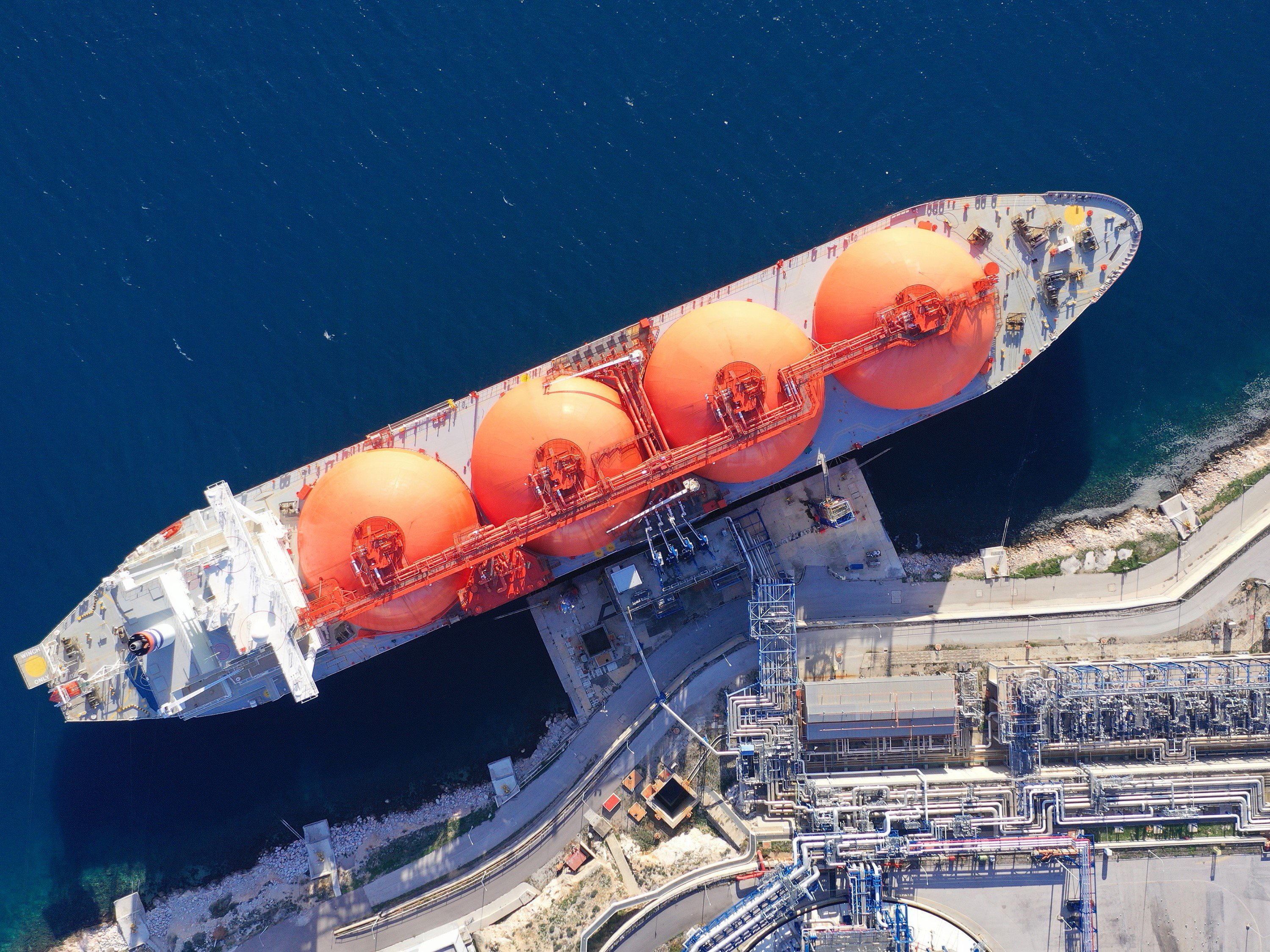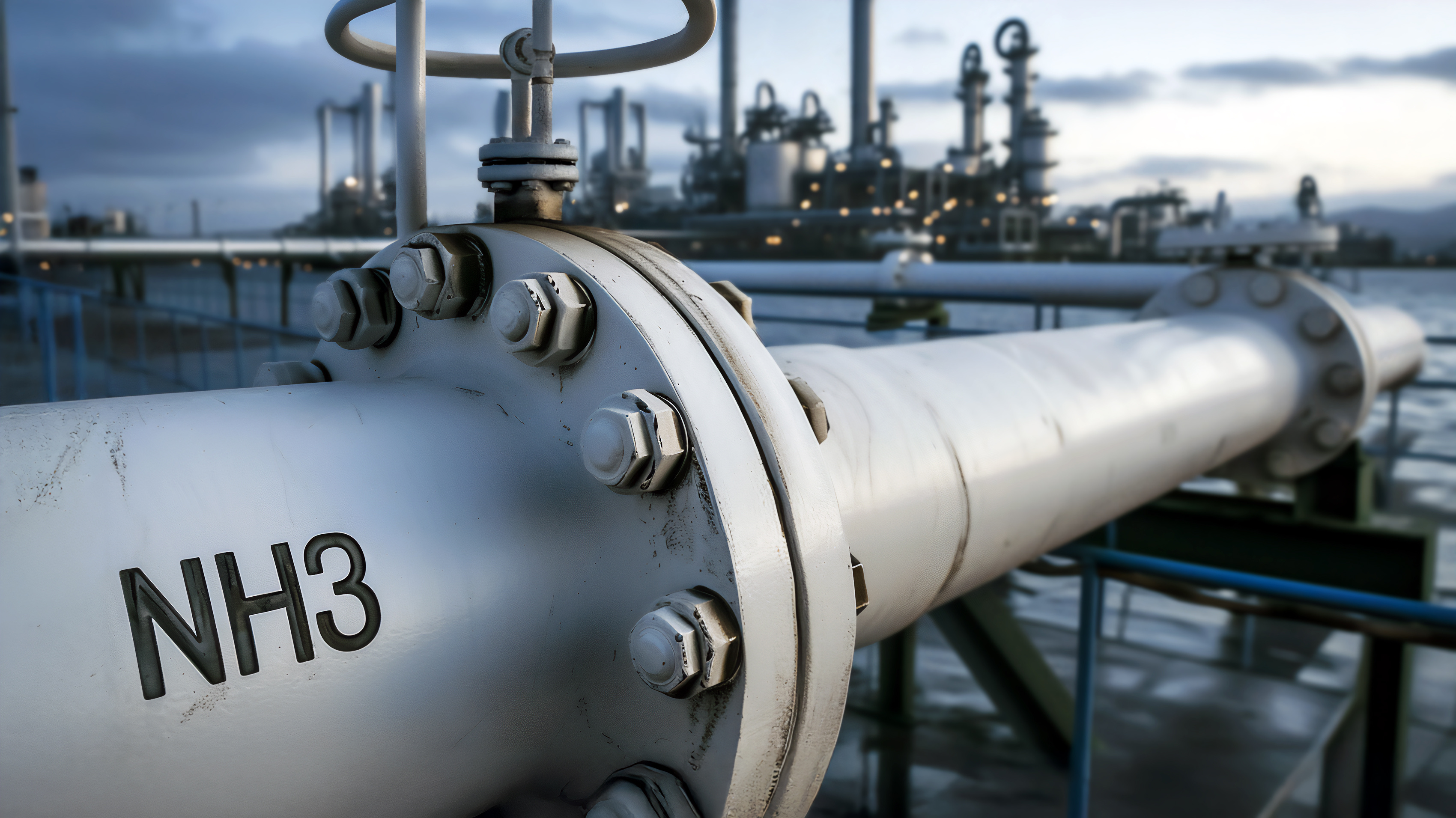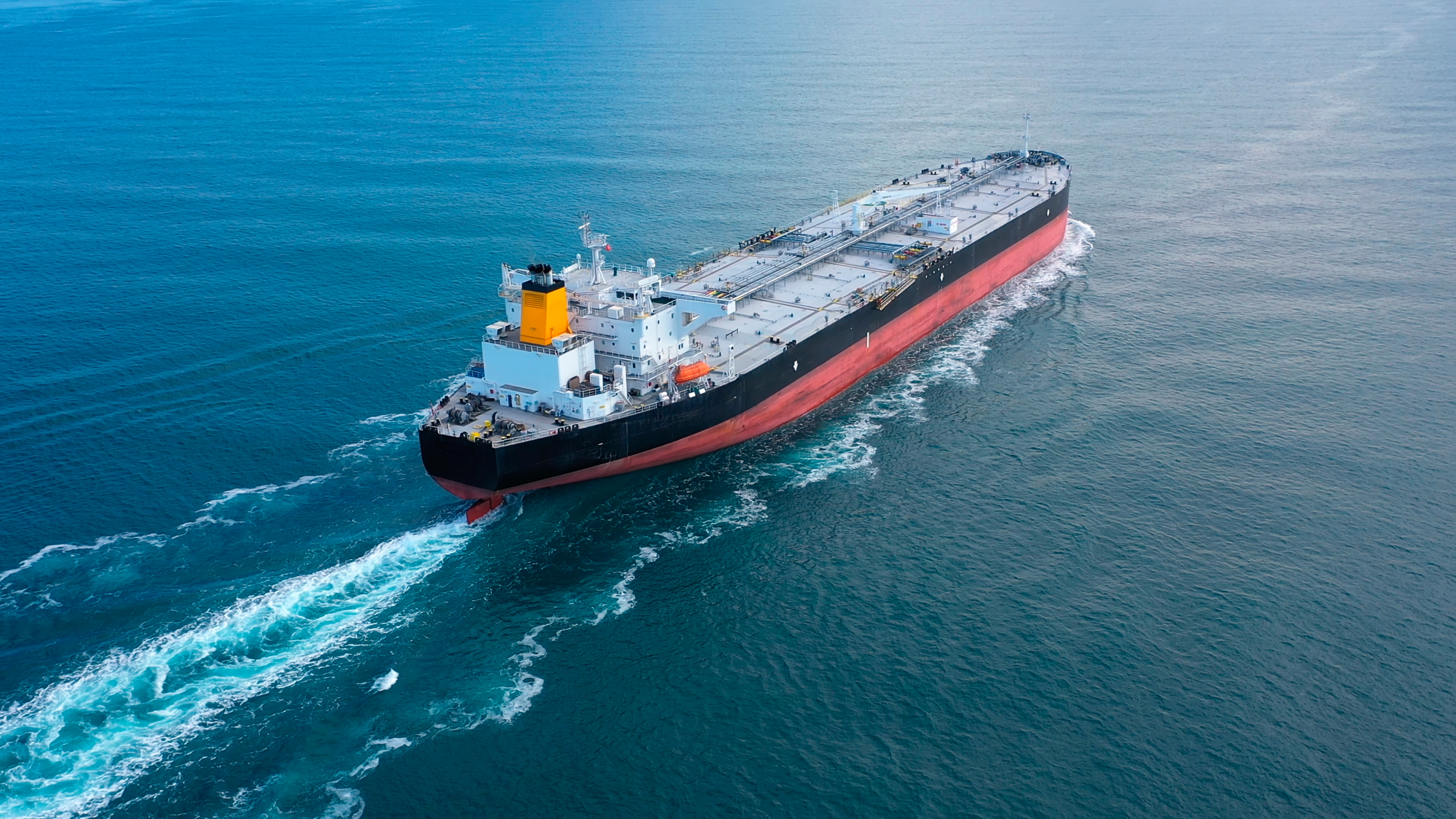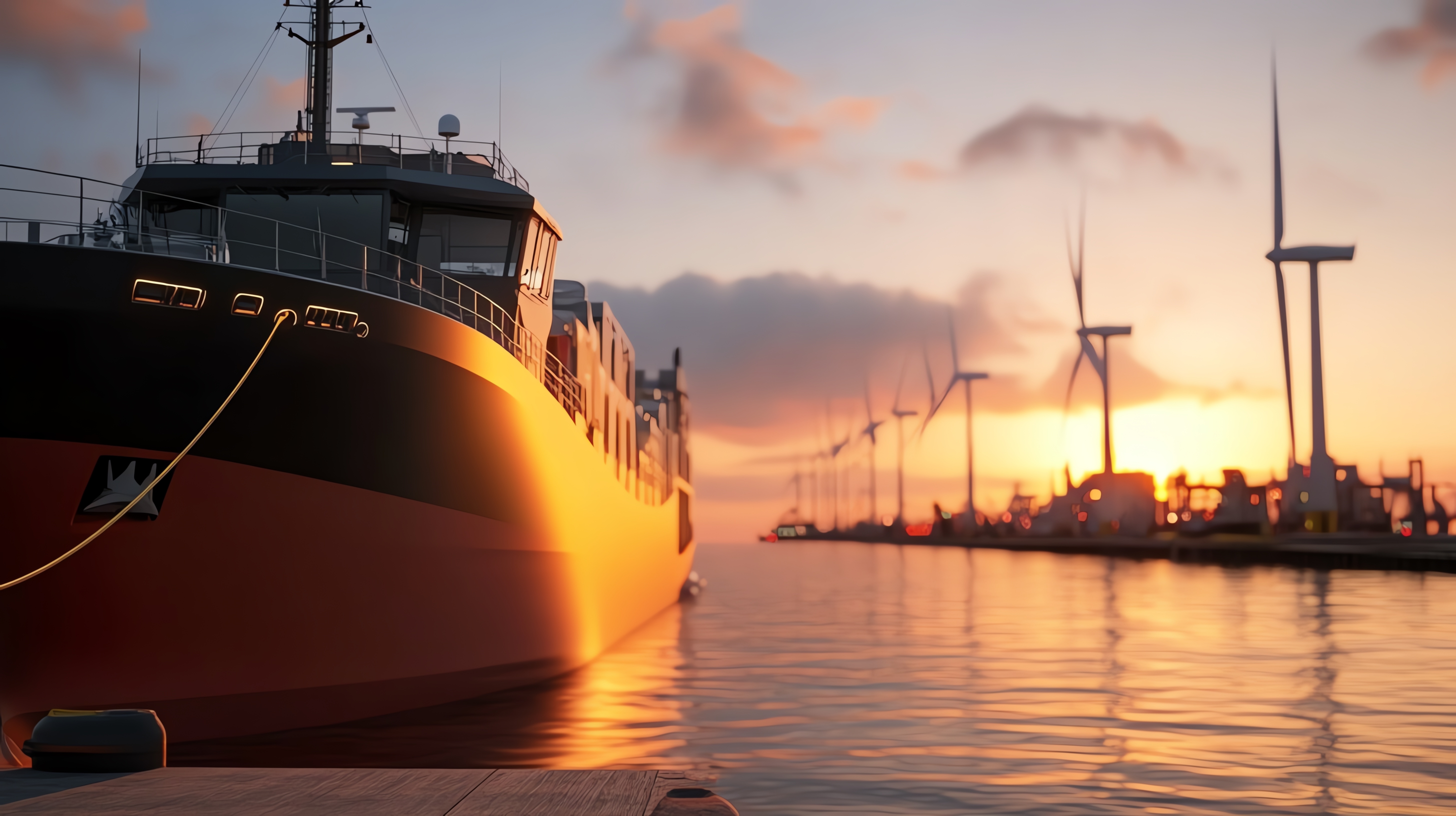
Decarbonising Shipping: What Role will Transitional Fuels Play?
It's safe to say that the maritime industry's choice of fuel will be one of the most significant drivers in its efforts to decarbonise shipping. The industry is currently in a transitional phase, as it looks at ways to try and wean itself off the carbon-heavy fossil fuels that have powered it for the last century.
What is clear is that currently there is no proven source of carbon-neutral or zero-carbon fuel capable of fully servicing the industry's energy needs within the coming decade.
Accordingly, transitional fossil-based fuels with a reduced carbon content will play a key part in keeping the industry moving until carbon-neutral or zero-carbon options become more widely available.
As part of a series on ship fuels, we shall discuss in this article the advantages and disadvantages of the currently available transitional fuels on the market. In the next article, we shall investigate the new breed of future fuels that are under development for the next generation of vessels, rounding off with a final article looking at the regulatory landscape that ship owners navigate presently and in the future.
Liquefied Natural Gas (LNG)
As evidenced by the 2023 vessel order book, LNG is already an established alternative and is still gaining ground, looking set to be an increasingly important component of the industry’s energy transition.
LNG offers vessels cleaner fuel combustion and a reduction in the vessel’s CO2 emissions when compared with currently available Very Low Sulphur Fuel Oil (VLSFO) and distillate fuels.
Advantages also include an established supply chain and network of bunkering hubs, as well as lower EEDI and CII ratings.
As a transitional fuel, forecasts show that LNG-powered vessels may remain directly compliant with EEDI regulations until 2034 - 2039 (dependant on engine type), the point at which those regulations will have tightened to the point where LNG as marine fuel will likely become non-compliant as the industry looks to move away from fossil-based fuels.
Nevertheless, LNG fuelled vessels can shift to Bio LNG or Synthetic LNG when these options become more commercially viable.
However, the industry will need to bear in mind the potential disadvantages of LNG. There is no getting away from the fact that it is a fossil fuel based energy form, and that higher capital expenditure will be needed in view of the fact that LNG needs to be kept at -162°C to remain in its liquid state, with tanks approximately 1.8 times the size of conventional MDO tanks.
The LNG-fuelled vessel sector is also at risk of creating a high number of ‘stranded assets’ , as highlighted by research by UCL which states that such vessels’ economic return may not last as long as expected, if the same vessels were then forced to retrofit to run on scalable zero emissions fuels. Under these circumstances, the potential loss is estimated at approximately 15-25% of their value, which is £113 - £184bn ($129 - $210bn) if the LNG-capable fleet grows strongly this decade.
Further to this, LNG suffers from methane slip, a phenomenon where unburned methane from the engine is released as emissions. Technological solutions to this issue are still being investigated, and further development to counteract the issue will be needed to ensure significant emission reductions.
| Advantages | Disadvantages |
|
|
|
|
|
|
| |
|
Biofuels
Being more energy-dense than other transitional fuels, a large proportion of companies are looking to biofuels as a short-term “drop in” solution.
Biofuel blends are based on existing ISO 8217 fuels and therefore would not require engine and tank modification. The higher market price is therefore off-set to some degree by avoiding the costs of modifying existing vessel machinery.
Biofuel options also give better results in terms of CII compliance when compared with fossil methanol, for example, as fossil methanol does not offer the same carbon intensity reductions.
However, utilising biofuel means that the shipping industry would be in feedstock competition for biomass with other sectors, such as aviation and road transport who are similarly keen to decarbonise their industries by turning to biofuels. The competition may lead to price rises as demand outstrips supply.
Further questions have been raised over the ethical impact of cultivating biomass for use as fuel, where the resources (including land) used to grow the biomass could instead be used to grow food.
Biofuels also come with added certification requirements, which in the short term could act as a barrier to uptake by suppliers. However, as more companies get involved, indications are that certification should become cheaper and easier.
| Advantages | Disadvantages |
|
|
|
|
|
|
|
|
Fossil Methanol
Box ship operators like Maersk are currently driving methanol growth, with 19 dual-fuel vessels on order. CMA CGM are known to have 12 methanol-fuelled container vessels on order with an expected completion date of 2026, and Hapag-Lloyd also signing a bunkering deal with Shell for its new container vessels. So, for the box ship sector at least, methanol appears to be the future fuel of choice.
Liquid at ambient temperatures, methanol does not need to be stored at low temperature (like LNG), or pressurised tanks (like LPG). It is soluble in water, bio-degradable and naturally occurring in ocean environments. This means that a methanol spill, if one were to occur, would be a much lower risk to the environment than a spill involving conventional fuels.
However, comprehensive infrastructure for global methanol supply is still some way off. The intention appears to be to run these new vessels primarily on green methanol (i.e. methanol not derived from fossil fuels, which would be “blue methanol”), but current market availability for green methanol is very limited.
Additionally, methanol has a relatively low energy content when compared with marine gas oil, meaning that in order to achieve the same energy content, methanol tanks would need to be approximately 2.5 times larger. Owners would therefore be faced with a trade-off for cargo space.
Methanol toxic both as a liquid and as a vapour is considered a low flashpoint fuel, with a low minimum ignition energy, and burns with a near invisible flame, which would necessitate increased crew training and special fire detectors to be installed on ships.
For further information on methanol as a ship fuel, please see the UK P&I Club’s article here.
| Advantages | Disadvantages |
|
|
|
|
|
|
Liquefied Petroleum Gas (LPG)
LPG is currently only used on LPG carriers. As discussed by DNV in their webinar on alternative fuels, LPG offers benefits of up to a 15% reduction in carbon emissions. Furthermore, LPG tanks are capable of storing ammonia, meaning that this ship type might be the closest to being ammonia-ready, when the technology is available.
Compared to LNG, LPG is easier to liquefy (it only needs refrigerating to -42°C) and therefore easier, and less expensive to store as a bunker fuel. This means it has lower CAPEX costs when compared to LNG. It is also non-toxic and non-harmful to water.
However, 4-stroke engines for marine use are not yet commercially available, meaning that the fuel potential of this fuel type is presently limited, and risks arise due to LPG’s extremely flammable nature. Vessel tanks would also need to increase in size - LPG needs tanks that are 1.5 times bigger than conventional MGO tanks.
| Advantages | Disadvantages |
|
|
|
|
|
|
Conclusion
Whichever fuel choice Owners decide is right for them, transitional fuels will play a crucial part in the industry’s drive to lower emissions.
It is an inescapable fact that transitional and future fuels will generally have a lower energy density than conventional fuel oil, meaning that Owners and Operators will need to factor in increased fuel capacity, meaning either a reduction in cargo capacity or a higher frequency of bunkering operations.
What is clear is that the decarbonisation of the industry will require cross-industry collaboration, clarity on the regulatory framework under which new fuels will operate and technological advancement, not only in fuel production but also in vessel and fuel tank design. In this regard, many industry stakeholders are keeping a weather eye on the outcome of MEPC 80 in July later this year.
In our next article in the series, we shall focus on the new breed of future fuels that are under development for the next generation of vessels.




